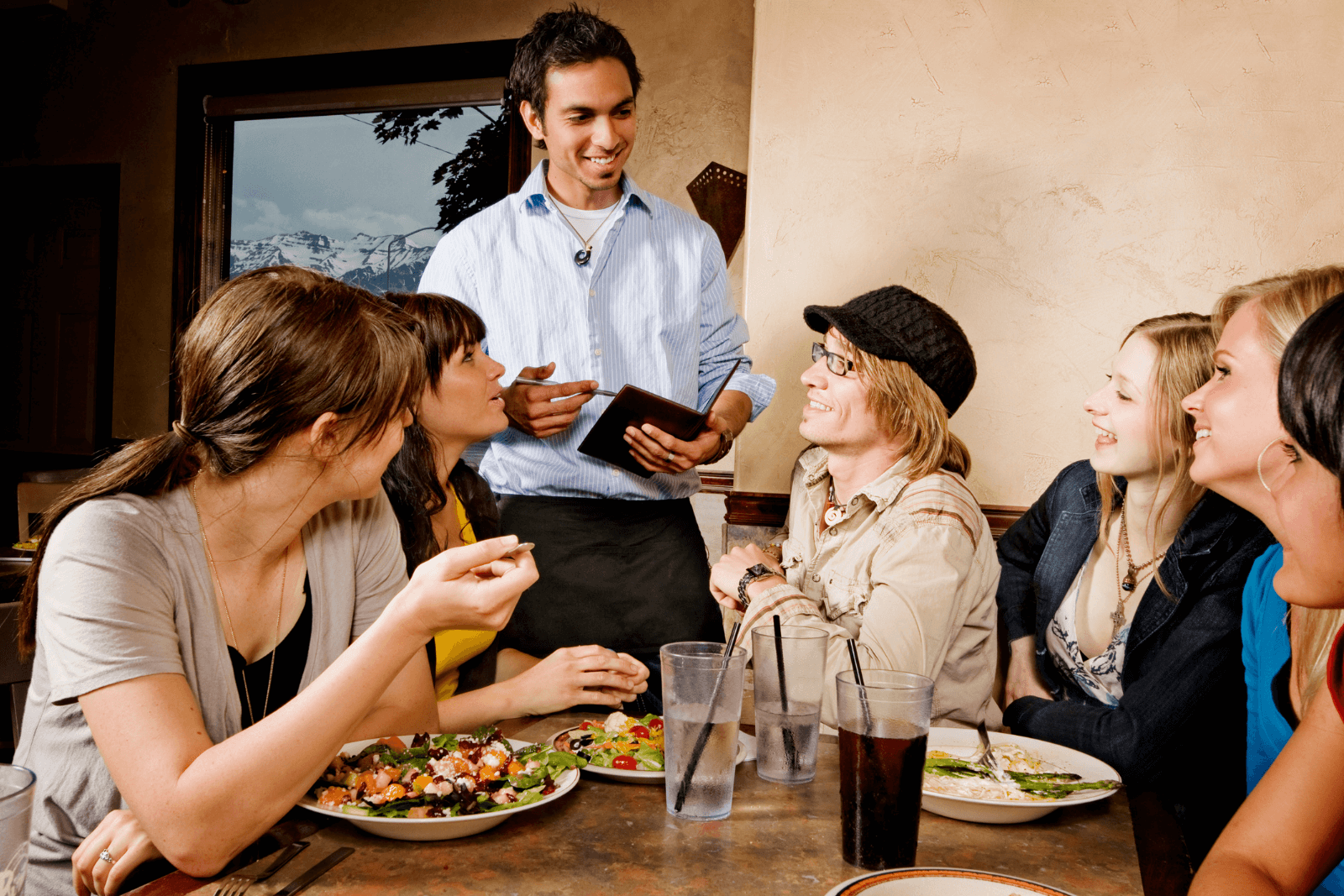4 Ways to Increase Your Table Turnover With Restaurant Automation
As technology evolves, so do customer expectations and industry standards, with automation being one of the more recent innovations.
If you're in the restaurant industry, understanding the potential of using automation can be a game-changer.
This article is here to help you explore the ways this technology can speed up your table turnover rate, which in turn can enhance your restaurant's productivity and profitability.
We'll delve into various technological innovations that are making waves in the restaurant industry, ranging from automated table reservations and digital waiting lists to mobile POS systems and even contactless dining.
Ready to see how automation can help you run your restaurant more smoothly? Let's begin by reimagining your reservation process.
Automate Table Reservations
First off, we’ll dive into the process of automating table reservations.
Remember the good old days when reservations had to be penciled into a ledger, and guests were at the mercy of the dial tone when calling to make a reservation?
Those days are far behind us. In their place, we've seen the emergence of restaurant reservation systems equipped with an array of options to streamline the reservation process and, consequently, boost your table turnover rate.
A key aspect of these innovative systems is their ability to give you control over the duration of your guests' stay at your restaurant.
As written in this insightful article by Angela Pagán, a table of six or more people should typically be seating the same group between 90 and 120 minutes, as per the industry standard.
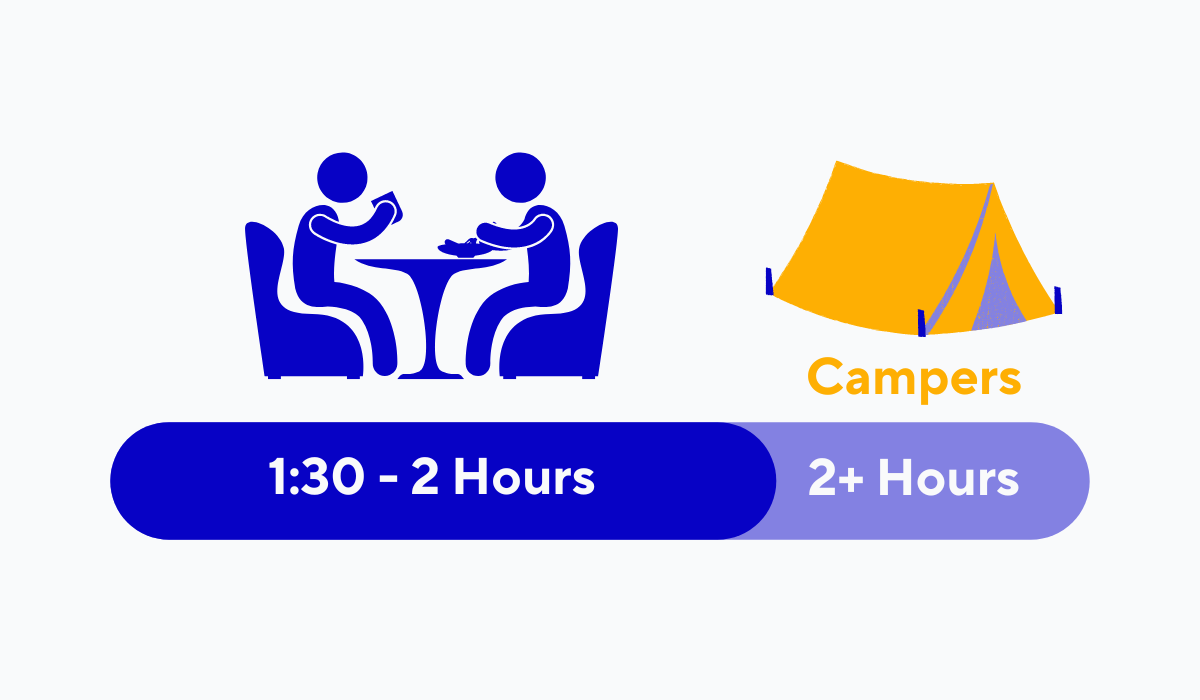
Source: Tablein
Surpassing this timeframe leads to guests being classified as "campers" who occupy the table for extended periods, preventing other potential customers from being seated and reducing your turnover rate.
Wondering how to solve this problem? Let's turn our attention to our restaurant reservation system, Tablein.
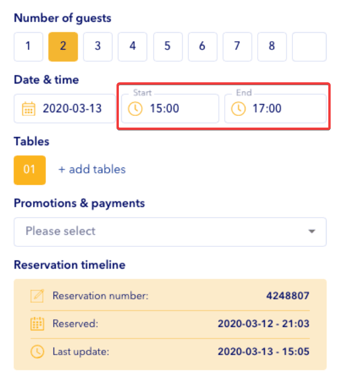
Source: Tablein
As evident in the image, Tablein provides a feature to control turnover time for each reservation.
For example, you could set time limits to be either 90 minutes or two hours, which would then be reflected in Tablein's organized reservation list, shown below.
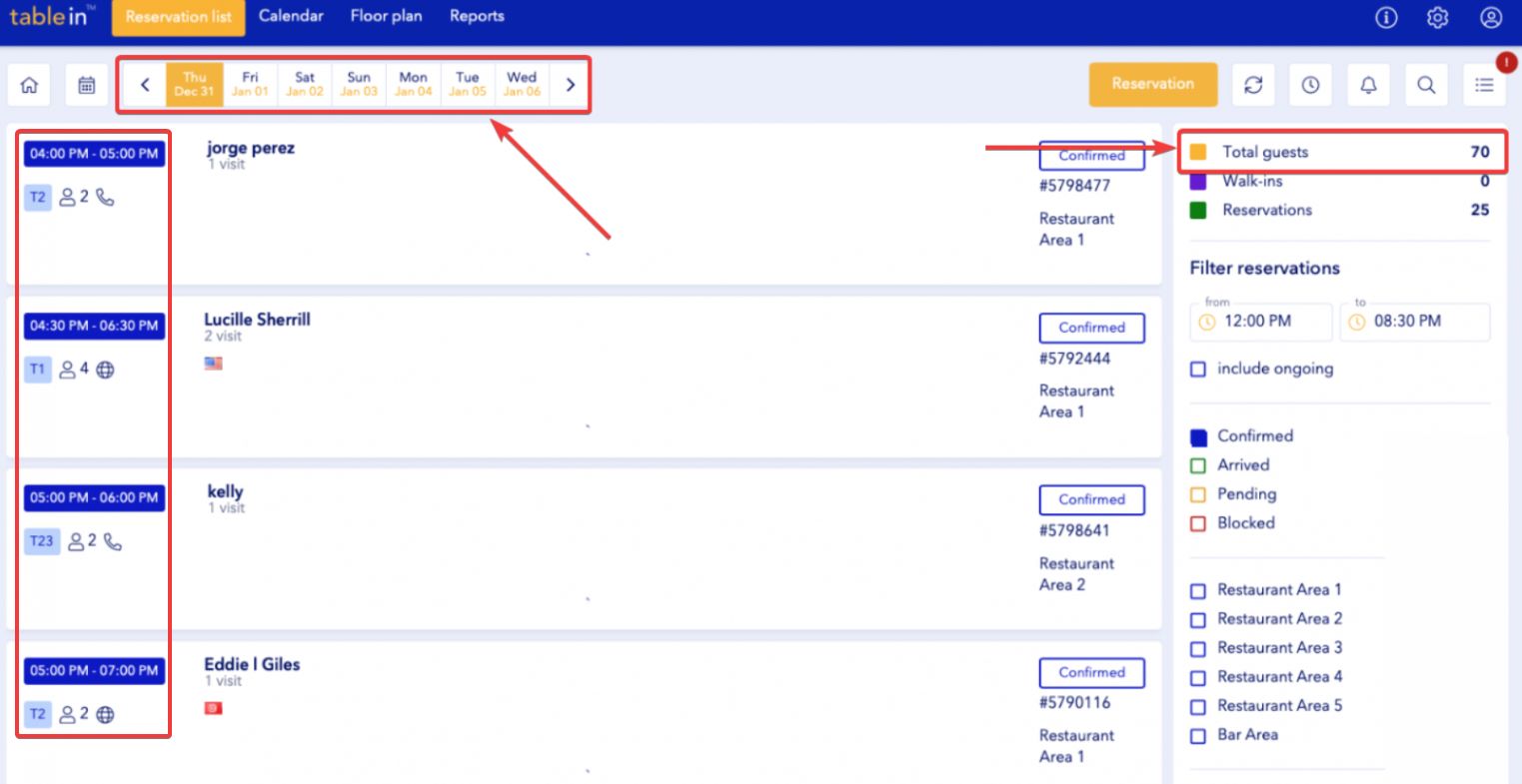
Source: Tablein
With this setup, your staff can quickly gauge the time allocated for each table, removing the need to keep track manually.
Upon spotting a table that's due to be turned, waitstaff can promptly act, ensuring a smooth transition for incoming guests.
Tablein's reservation list is far from a one-trick pony.
It also automatically computes the number of reservations and total guests for each day, assisting your kitchen staff in planning their operations, thus enhancing service efficiency and how often you can turn a table.
And one of the ways Tablein can accurately know the number of reservations each time is through another feature—automated email communication.

Source: Tablein
For example, the image above shows a reservation confirmation email.
This handy communication allows guests to not only add their reservation to their personal calendar but also provides an easy option to cancel if plans change.
This means guests are more likely to show up as scheduled, allowing you to count on accurate reservation numbers.
These emails are automatically dispatched, saving you and your staff from additional manual work and ensuring a smooth, efficient operation.
Automating your table reservations with a modern reservation system like Tablein is just the beginning. Let’s keep going.
Make Use of a Digital Waiting List
Automation isn't a practice strictly confined to table reservations.
Walk-ins are a significant part of a restaurant's customer base, and finding ways to efficiently handle this type of traffic through automation can considerably improve table turnover rates.
So, let's delve into one area that's ripe for automation—restaurant waiting lists. Consider the scenario shown in the Quora answer below.
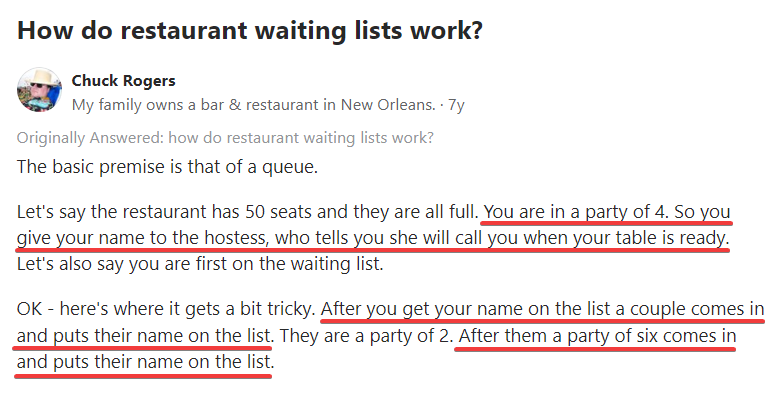
Source: Quora
While in a perfect world, these three groups would be seated in order, it's not always as seamless as it sounds.
Say the host phoned a guest on the waiting list, it went unanswered, or someone accidentally made a mistake while writing down the guests’ information.
These situations would lead to longer wait times and frustrated customers. And any delay in seating new customers when a table is open means slower table turnovers.
Traditional waiting lists can add to these complications.

Source: All Business Templates
Despite their simplicity, they often fall prey to issues such as the following:
- Limited space
- Messy handwriting
- Storage problems
But there’s a solution that comes with a set of automation features as well—digital waiting lists.

Source: Tablein
A digital waiting list can dramatically enhance the dining experience for both your staff and guests.
Let's say a party of 3 walked in and requested a table. The host would take down their number and add them to the digital waiting list, which estimates when their table will be free.
In a traditional setup, the customers might have hovered around the host stand or crowded the waiting area to ensure they didn't miss their turn.
But with a digital waiting list, they would receive an automated SMS notifying them when their table is ready.
This simple automated feature can revolutionize the waiting experience for customers and staff alike, offering benefits such as the following:
- Allowing guests to wait anywhere they wish
- Avoiding overcrowded waiting areas
- Keeping guests updated about their table status
- Streamlining waiting list management for staff
- Reducing stress for your team and letting them focus on excellent service
- Enhancing the overall guest experience
To sum up, digital solutions overcome the limitations of traditional waiting lists and add new automated capabilities that can enhance guest experience and staff efficiency.
By using them, you can navigate the flow of customers much more smoothly, leading to more efficient operations and a better dining experience for everyone involved.
Equip Servers With Mobile POS Systems
Let's delve into how equipping your staff with modern technology can enhance their productivity and your table turnover.
Undoubtedly, some sort of POS system is at work in your establishment, facilitating transactions and managing orders.

Source: Welcome Table
Perhaps you still rely on a traditional POS system like the one shown above. These are reliable workhorses that have been utilized in the restaurant industry for decades.
While these systems have their merits, they may not be the most efficient tools in today's fast-paced restaurant environment, where maximizing table turnover is key to profitability.
Consider the typical workflow with a traditional POS system.
Each time an order is placed, the server walks back to the POS terminal to input the details. If the server misremembers an order?
Back to the POS terminal they go. A table asked for the bill? Again, it's a trek back to the terminal, and then back to the table to deliver the check.
All these trips back and forth consume valuable time, increasing the duration a table is occupied, and, consequently, lowering your table turnover rate.
Now, let's turn our attention to a game-changer—mobile POS systems.

Source: Toast
Mobile POS systems, like the one depicted above, encapsulate all the functionalities of a traditional POS system within a portable, handheld device.
The advantages of this compact and mobile solution are numerous, with a substantial impact on table turnover.
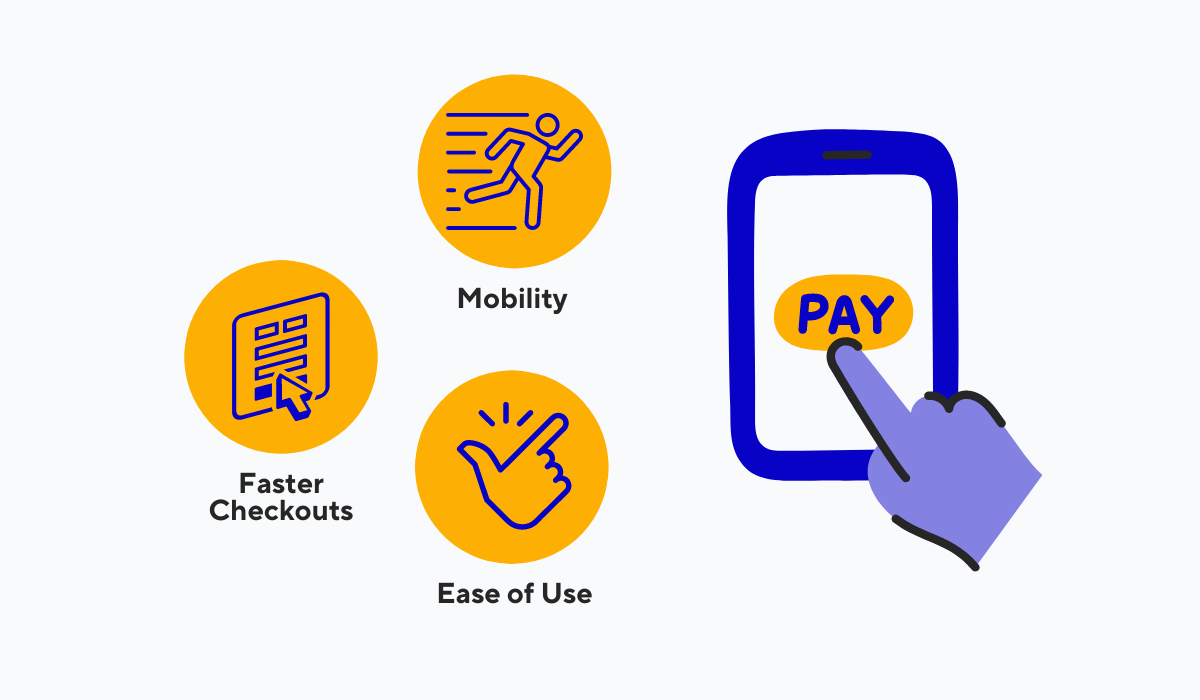
Source: Tablein
Firstly, these devices bring unprecedented mobility to your staff.
Servers can take orders right at the table, enter them into the system on the spot, and even process payments without leaving the customer's side.
This level of efficiency significantly reduces the time spent per table, allowing for faster table turnover.
Furthermore, mobile POS systems are designed to be intuitive and user-friendly. This ease of use translates to less time spent on training staff and fewer errors in order entry.
When choosing a mobile POS system, you'll encounter dedicated devices and software-based solutions that can be installed on standard tablets or smartphones.
The following table illustrates their comparison.
| Mobile POS Systems | Software-based POS systems |
| Accepts various payment methods | Payment methods limited by hardware |
| Durable devices | Less robust hardware |
| Long battery life | Battery dependant on specific devices |
| Built for efficiency | Limited by device processing power |
We generally recommend dedicated mobile POS systems specifically designed for restaurant operations. However, the final choice should be guided by your unique business needs and operational preferences.
Overall, swapping your traditional POS systems for mobile alternatives may just be the modern upgrade your restaurant needs to enhance efficiency and increase turnover.
Implement Contactless Dining
But why stop here? With the rise of contactless dining, there’s a powerful innovation that can both simplify and elevate the dining experience.
Here, automation takes a leap forward, seeking to integrate the entire dining experience into a singular, fluid process.
To put it simply, this is a dining system where the entire process, from ordering to payment, can be done without any direct interaction with the restaurant staff.
The diagram below offers a simplified representation of the process.

Source: Tablein
It all starts with a digital menu, accessible through a simple QR code placed on the table.
Gone are the days of waiting for a staff member to hand over a physical menu or flipping through numerous pages to decide on a meal.
With a swift scan, the menu pops up on the guests' smartphones, ensuring a quick and efficient start to their dining experience.

Source: Quora
The benefits of these digital menus are multiple.
They are easy to use, and their implementation greatly contributes to the overall efficiency of the dining process.
Instantly available to guests, they cut down the initial waiting time significantly, thus freeing up valuable minutes.
Next up is speeding up the food ordering process. With a quick tap, guests should be able to place their orders directly from their digital menus.
These orders are then sent automatically to the kitchen staff, removing the need for waitstaff to take and relay them.
The convenience of contactless dining extends to the payment process as well. Guests can choose to pay anytime they want, potentially reducing the time they spend at the table.
This ensures a swift table turnover, directly contributing to a boost in your restaurant's revenue.
Now, you might argue that the traditional waiting time isn't that long. But let's consider the big picture here.
Every minute saved on the ordering and payment process compounds over time and results in a significantly higher table turnover rate.
The Covid-19 pandemic initiated the widespread adoption of contactless dining. However, due to the clear benefits it offers, many establishments continue to implement these practices even post-pandemic.
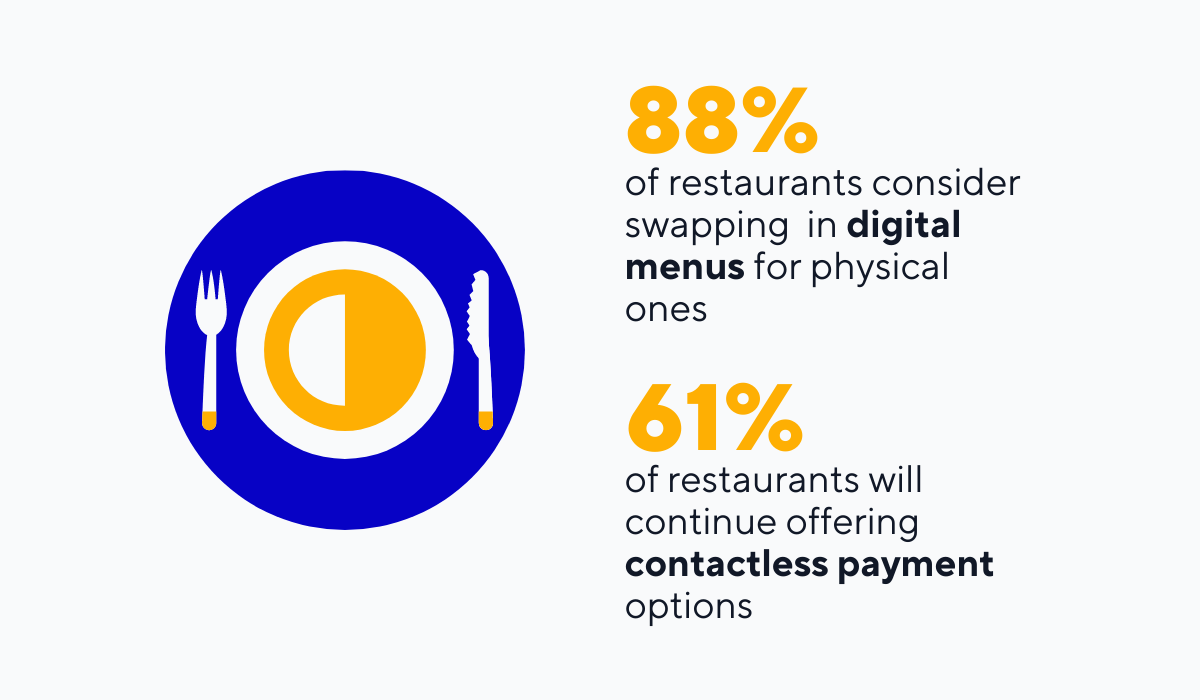
Illustration: Tablein / Data: RestaurantDive
In fact, digital menus have become a common sight in most restaurants, and contactless payment options are becoming increasingly popular.
In conclusion, contactless dining isn't just a trend—it's a clear step forward in the evolution of the restaurant industry. Embrace it, and watch your restaurant thrive.
Conclusion
With that, we’ve finished exploring restaurant automation and the ways it can help improve your restaurant’s table turnover.
Ideally, you should have gained a new perspective on how automation can work to your advantage, helping your restaurant keep up with the fast-paced demands of the industry.
With our insights, you can try and optimize your operations by ushering in some modern tools and methods.
By embracing these practices, you can streamline your operations and increase your table turnover rate, which can boost your restaurant's overall efficiency and positively affect your revenue.
The future of dining is a blend of hospitality and technology. Give automation a go and witness the transformative impact it can have on your restaurant.
Get a 30-day Exclusive Trial
As a Tablein blog reader, you’re eligible for an exclusive 30-day free trial to experience our simple reservation solution for your restaurant.
Enter your business email, and we’ll send you all the steps needed to create your account.
Share this
You may also like

The Ultimate Guide to Restaurant Table Turnover

5 Reasons Why You Need a Restaurant Booking System
